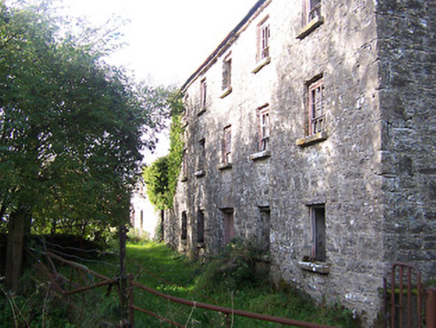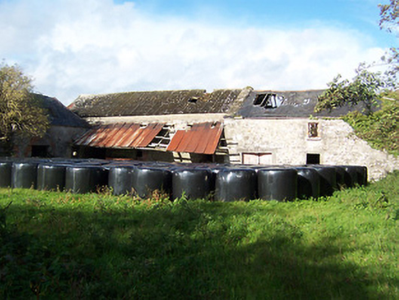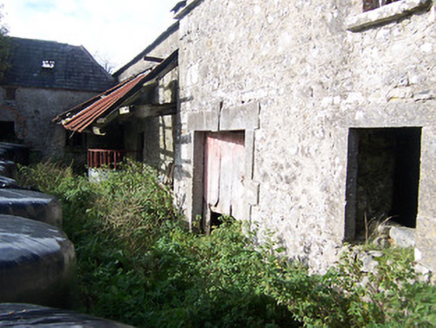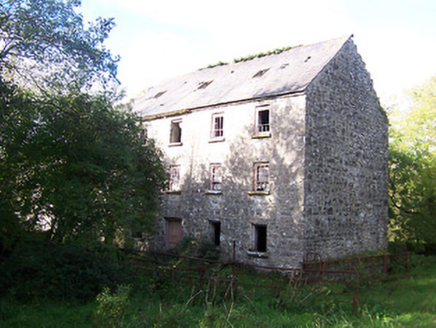Survey Data
Reg No
15400307
Rating
Regional
Categories of Special Interest
Architectural, Technical
Original Use
Mill (water)
Date
1780 - 1850
Coordinates
245740, 273702
Date Recorded
07/10/2004
Date Updated
--/--/--
Description
Former corn and woolen mill complex, built c.1800 and extended c.1840, comprising a five-bay three-storey mill building, c.1840, to the east and a number of two-storey ancillary structures, c.1800, on L-shaped plan to the west (across mill race), including a three-bay two-storey building which was probably the original mill building. Now derelict and out of use. Pitched natural slate roofs with projecting eave courses and remains of cast-iron rainwater goods. Cast-iron roof lights to three-storey structure. Constructed of coursed rubble limestone with flush quoins to corners having evidence of early lime render over. Square-headed window openings having cut stone sills having remains of three-over-six pane timber sliding sash windows to three-storey building. Flush cut stone surrounds to earlier two-storey building having remains of diamond pane cast-iron windows. Square-headed doorcases with remains of timber sheeted doors. Square-headed doorcase having timber sheeted double doors and cut stone block and start surround with projecting keystone over to two-storey building. Remains of timber and cast-iron machinery, including remains of two waterwheels. Located to the north of Castlepollard and to the northwest of former mill owner's house (15400309).
Appraisal
An appealing former corn and woollen mill, which retains its early form and character despite being out of use for a considerable period of time. These buildings are constructed of local limestone, which helps them to blend seamlessly into the local landscape. This complex appears to be of two distinct periods with the buildings to the west of the millrace being constructed first, probably c.1800. The three-storey building to the east of the mill race was built sometime later, probably during the mid nineteenth-century date, and indicates that this was a profitable economic venture. The probable earlier corn mill building to the west displays some evidence of architectural pretension with a number of good quality cut limestone block-and-start surrounds with keystones to the door openings. These are an unusual feature to find on a small-scale mill complex of this nature. Gilbertstown Mills is one of a number of mills along the River Glore in Co. Westmeath, indicating that this was a powerful and exploitable natural watercourse at the time. The survival of some of the early timber and cast-iron machinery is of technical merit and gives some impression of the production mechanisms in use at the time. Gilbertstown Mills remains an attractive complex, of some picturesque quality, to the north of Castlepollard and is an important constituent of the industrial and economic heritage of Westmeath.







